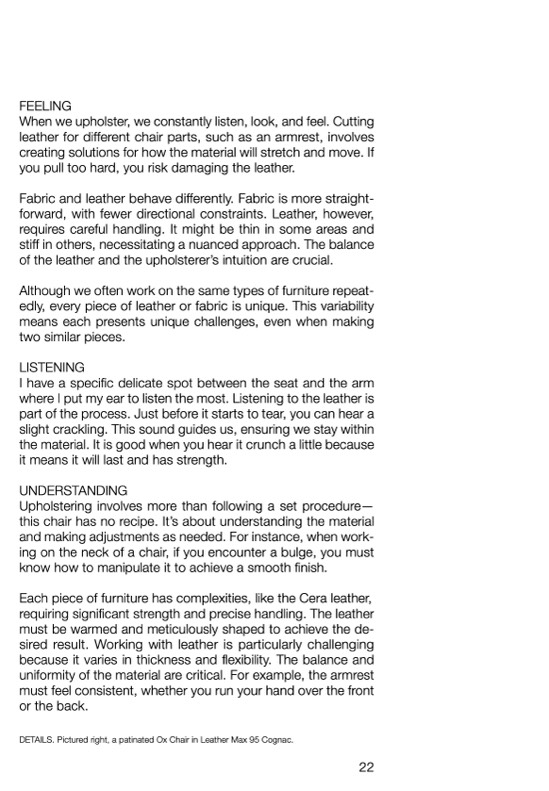
FEELING
When we upholster, we constantly listen, look, and feel. Cutting
leather for different chair parts, such as an armrest, involves
creating solutions for how the material will stretch and move. If
you pull too hard, you risk damaging the leather.
Fabric and leather behave differently. Fabric is more straight-
forward, with fewer directional constraints. Leather, however,
requires careful handling. It might be thin in some areas and
stiff in others, necessitating a nuanced approach. The balance
of the leather and the upholsterer’s intuition are crucial.
Although we often work on the same types of furniture repeat-
edly, every piece of leather or fabric is unique. This variability
means each presents unique challenges, even when making
two similar pieces.
LISTENING
I have a specific delicate spot between the seat and the arm
where I put my ear to listen the most. Listening to the leather is
part of the process. Just before it starts to tear, you can hear a
slight crackling. This sound guides us, ensuring we stay within
the material. It is good when you hear it crunch a little because
it means it will last and has strength.
UNDERSTANDING
Upholstering involves more than following a set procedure—
this chair has no recipe. It’s about understanding the material
and making adjustments as needed. For instance, when work-
ing on the neck of a chair, if you encounter a bulge, you must
know how to manipulate it to achieve a smooth finish.
Each piece of furniture has complexities, like the Cera leather,
requiring significant strength and precise handling. The leather
must be warmed and meticulously shaped to achieve the de-
sired result. Working with leather is particularly challenging
because it varies in thickness and flexibility. The balance and
uniformity of the material are critical. For example, the armrest
must feel consistent, whether you run your hand over the front
or the back.
DETAILS. Pictured right, a patinated Ox Chair in Leather Max 95 Cognac.
22

